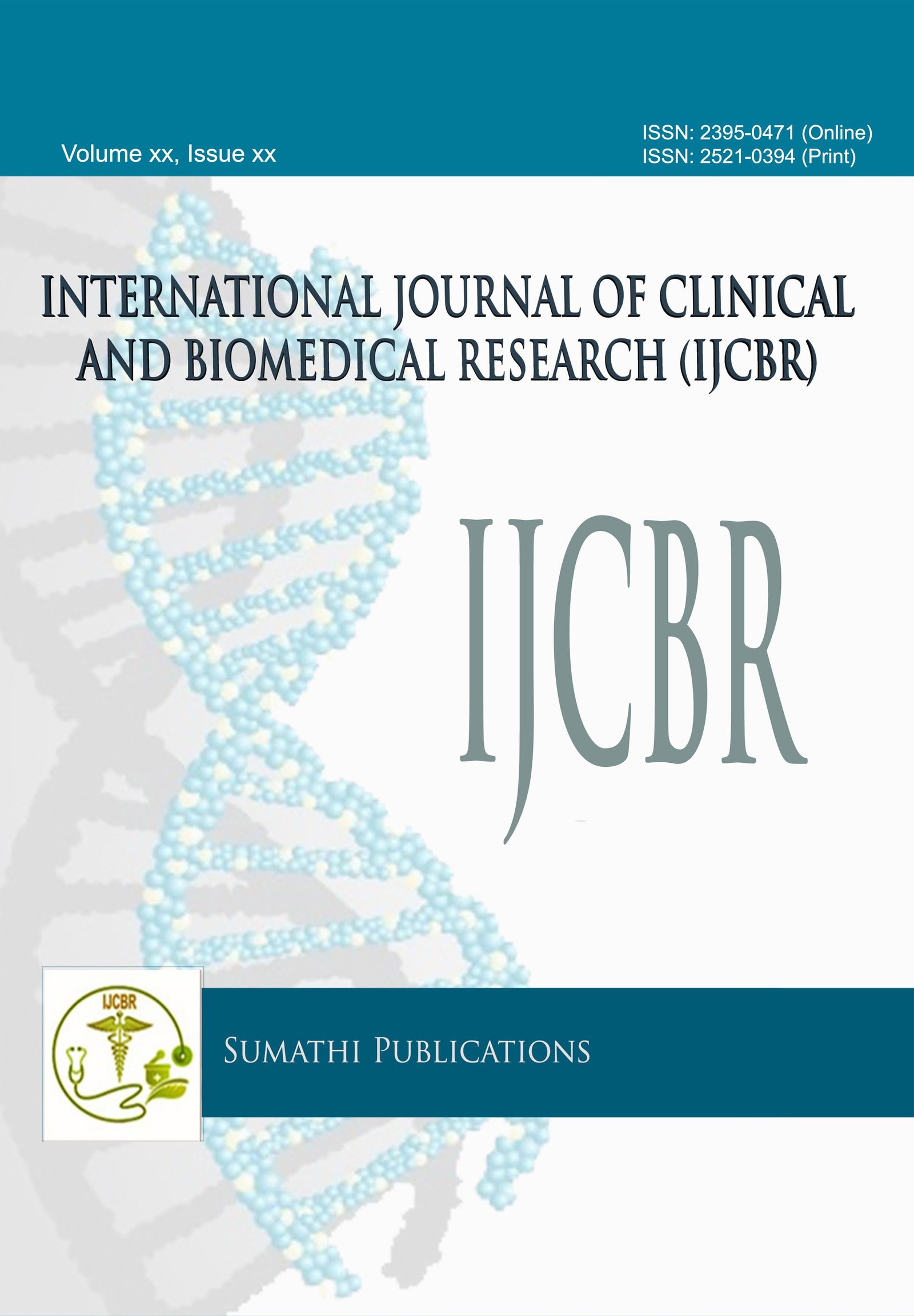ASSOCIATION BETWEEN MICROALBUMINURIA AND OXIDATIVE STRESS IN DIABETIC NEPHROPATHY
Abstract
Objectives: Diabetic Nephropathy (DN) is a leading cause of chronic kidney disease and end stage renal failure worldwide. This study aimed to evaluate the association between oxidants, antioxidants and microalbuminuria in Diabetic Nephropathy compared with Type II Diabetes Mellitus (DM). Methods: The study includes 60 Type II Diabetes Mellitus and 40 Diabetic Nephropathy Patients. Parameters performed HbA1c, urea, creatinine, total proteins, microalbuminuria, glutathione peroxidase and malondialdehyde(MDA). Results: The levels of HbA1c, urea, creatinine, microalbuminuria and malondialdehyde are significantly higher in DN compared with Type II DM. the levels of T.P and glutathione peroxidase are decreased in DN compared with Type II DM. Conclusion: Low levels of glutathione peroxidase and total proteins were observed in DN. HbA1c, urea, creatinine, microalbuminuria and malondialdehyde levels were elevated in DN compared with Type II DM.
KEYWORDS: Diabetic Nephropathy; Glutathione peroxidase; Microalbuminuria; Malondialdehyde.
Downloads
Downloads
Published
Issue
Section
License
The journal allows the author(s) to hold the copyright without restrictions and will retain publishing rights without restrictions.
The submitted papers are assumed to contain no proprietary material unprotected by patent or patent application; responsibility for technical content and for protection of proprietary material rests solely with the author(s) and their organizations and is not the responsibility of the journal. The main (first/corresponding) author is responsible for ensuring that the article has been seen and approved by all the other authors. It is the responsibility of the author to obtain all necessary copyright release permissions for the use of any copyrighted materials in the manuscript prior to the submission.
What are my rights as an author?
It is important to check the policy for the journal to which you are submitting or publishing to establish your rights as
Author. Journal's standard policies allow the following re-use rights:
- The journal allows the author(s) to hold the copyright without restrictions.
- The journal allows the author(s) to obtain publishing rights without restrictions.
- You may do whatever you wish with the version of the article you submitted to the journal.
- Once the article has been accepted for publication, you may post the accepted version of the article on your own personal website, your department's website or the repository of your institution without any restrictions.
- You may not post the accepted version of the article in any repository other than those listed above (i.e. you may not deposit in the repository of another institution or a subject-matter repository) until 12 months after publication of the article in the journal.
- You may use the published article for your own teaching needs or to supply on an individual basis to research colleagues, provided that such supply is not for commercial purposes.





